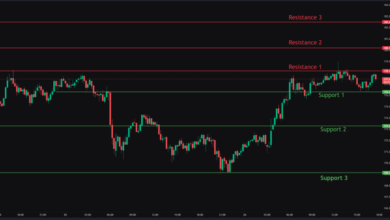How to Build a Real Estate Portfolio

Building a real estate portfolio requires a strategic approach that begins with defining your investment goals and understanding the market landscape. By carefully assessing your risk tolerance and researching both local and national trends, you can identify the most promising opportunities. Selecting the right investment strategy tailored to your objectives is crucial, whether you prefer a buy-and-hold method, a fix-and-flip model, or rental properties. However, the journey doesn’t end there; the intricacies of financing and ongoing performance monitoring are equally vital in achieving sustained success. What steps should you prioritize to ensure your portfolio thrives?
Define Your Investment Goals
Before embarking on the journey of building a real estate portfolio, it is essential to clearly define your investment goals, as this foundational step will guide your decision-making processes and strategies.
Consider your long-term objectives and assess your risk tolerance to ensure alignment with your financial aspirations.
A well-articulated plan will empower you to navigate the complexities of real estate investing effectively.
Research the Real Estate Market
Understanding the dynamics of the real estate market is vital for any investor looking to build a robust portfolio.
Thoroughly researching market trends allows you to identify lucrative property types that align with your investment goals.
Analyze local and national data, focusing on emerging neighborhoods and demand fluctuations.
This strategic approach empowers you to make informed decisions, ultimately enhancing your financial freedom through real estate investments.
Choose Your Investment Strategy
Selecting the right investment strategy is a crucial step in building a successful real estate portfolio. Options include buy and hold, which offers long-term stability, and fix and flip for quick profits.
Consider rental properties for consistent cash flow, or explore commercial investing for higher returns.
Additionally, REITs explained and crowdfunding platforms provide alternative avenues for diversified investments, enhancing your financial freedom.
Secure Financing Options
Building a real estate portfolio requires not only a well-defined investment strategy but also a solid financial foundation to support your endeavors.
Secure financing options include traditional loans, which often provide stability and lower interest rates, and private lenders, who can offer more flexible terms.
Evaluating these options strategically will enhance your ability to acquire properties and ultimately achieve financial freedom.
Monitor and Adjust Your Portfolio
The effectiveness of a real estate portfolio hinges on the continuous process of monitoring and adjusting its components in response to market dynamics and performance metrics.
Regular performance analysis allows investors to identify underperforming assets and capitalize on emerging market trends.
Conclusion
In conclusion, building a successful real estate portfolio requires a strategic approach that encompasses clear investment goals, thorough market research, and the selection of an appropriate investment strategy. By securing adequate financing and continuously monitoring portfolio performance, investors can adapt to changing market conditions. Ultimately, those who take the time to plan and adjust their strategies will find that fortune favors the bold, leading to enhanced returns and sustainable growth within the real estate sector.




